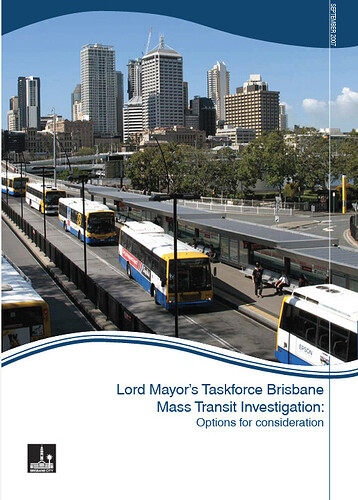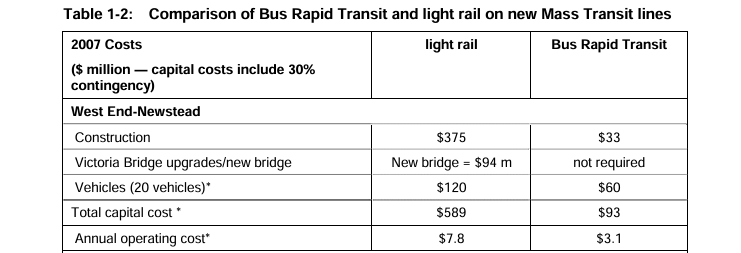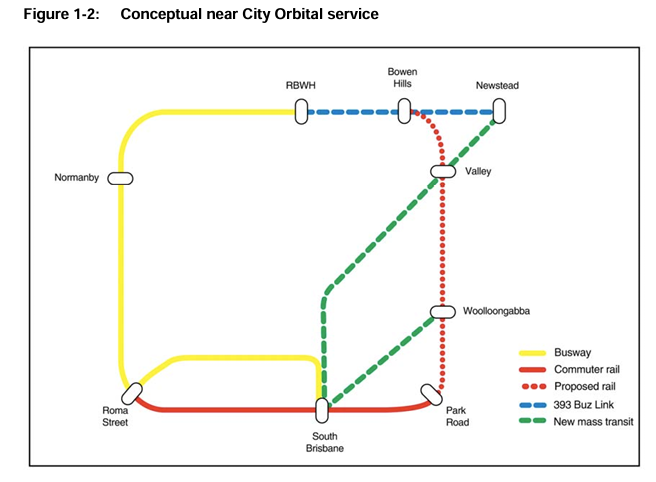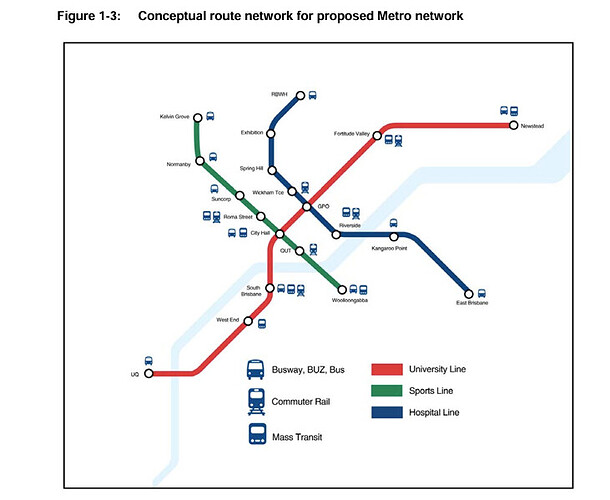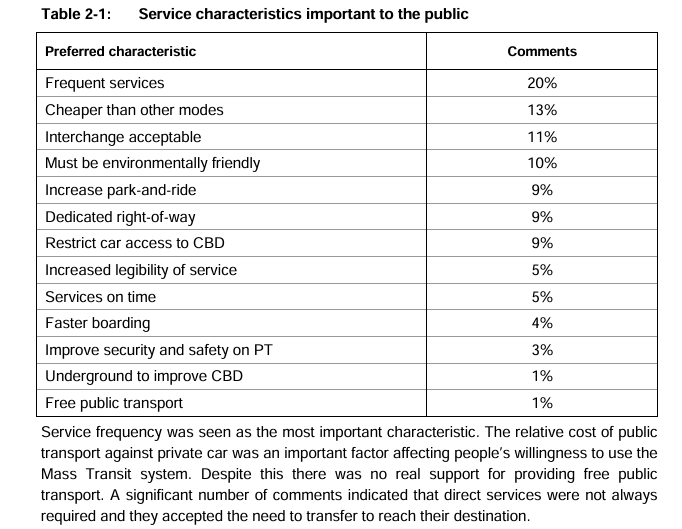A thread for BCC related research.
The Lord Mayor’s Mass Transit Investigation Report (2007)
The Report
The Lord Mayor’s Mass Transit Investigation (2007) was a major BCC investigation into the feasibility of Light Rail (LRT) and Bus Rapid Transit (BRT) for both (a) increasing peak hour capacity on the SE Busway and (b) selecting a new rapid transit mode to service the Montague Road corridor in West end, which had seen major redevelopment. Campbell Newman was the Brisbane Lord Mayor at the time.
Importantly, the report included an evaluation of BRT vs LRT for what is now the Blue CityGlider bus route.
A financial analysis was provided on Page 3. Major differences between LRT and BRT modes included:
- Victoria Bridge. The Victoria Bridge would likely not support the load of LRT, tracks and overhead wires. A new bridge would be required with the LRT option. With BRT, the existing bridge could be used.
- Higher Construction Cost. LRT would have 11x construction cost compared to BRT for the West End – Newstead Route (excluding a new Victoria Bridge). This is likely because LRT would require tracks to be embedded into the road, services dug up etc, whereas for BRT this could be delayed or avoided entirely.
- Higher Operating Cost. The annual operating cost for LRT was 2.5x higher than for BRT. It’s less clear why this was the case; it might be due to the maintenance of vehicles, wires and tracks.
- Higher Vehicle Costs. LRT vehicles were estimated at 2x the cost of BRT vehicles.
Page 3 Excerpt - Costs
High-Frequency Feeder Bus Services
The report mentioned high-frequency feeder services to and from busway and railway corridors (Page 5). To date, none of these have eventuated. Eighteen years after the report was published, the latest Brisbane New Bus Network (BNBN) changes have provided for feeder services, but none of these are high-frequency.
Near City Orbital Service
Page 5 describes a ‘Near City Orbital Service’ connecting Boggo Road (Park Road), Woolloongabba, Fortitude Valley and Bowen Hills.
Rail-Based Metro System
A Paris-Style inner city metro concept was explored, with a proposed starting date of 2026. Lines were grouped into themes – Universities, Hospitals, and Sports. A key problem with the rail-based metro concept is that PT options within the inner city are generally already very good. It’s the middle and outer suburbs of Brisbane that have poor PT. In addition to this, almost all destinations on the proposed rail-based metro network already have average to very good PT access.
BCC provided no costing or cost estimate for the concept rail-based metro, despite having having the opportunity to do so (they had already costed both LRT and BRT modes in the same report). Using a test value of $1 billion/km (Sydney Metro) and 18 km length of the lines, the minimum cost estimate for such a proposal would be around ~ $18b today.
Important Factors for Passengers
A service characteristics survey was conducted by BCC. Consistent with other information, out of 13 choices, free public transport was the lowest and last-ranked item, gaining just 1% of comments. Frequency was the first ranked on the list.
Conclusion
Brisbane still has many of the same issues that were around almost 20 years ago. Buses still do not properly connect to trains, infrastructure that relies on Priority A is incredibly expensive, passengers still value high frequency as a top priority over anything else, and a Paris-style metro is still an aspiration for its symbolic and representational value (when the actual PT problem is still low or no PT provision or supply in middle and outer suburban Brisbane).
Report
BCCMassTransitsep2007.pdf (2.3 MB)
That report favoured buses before it was written. Its bias unfunded garbage.
They only paid lip service to LRT because noise about trams would not go away after the BrizTram99 proposal failed.
There is a report that contradicts the BCC’s claim about the Victoria Bridge not suitable for LRT. From 2016 somehow the original Brisbane Metro subway proposal would be able to support a metro on the bridge but not LRT?
LRT could be suitable for other corridors (e.g. Kingsford Smith Drive to city). However, LRT isn’t suitable for the SEB due to factors mentioned elsewhere. The next step to upgrade would be heavy rail or rail-based metro.
The Quirk rail-based metro was withdrawn as it was possible to show that it reduced busway capacity and the Victoria Bridge wouldn’t support it.
